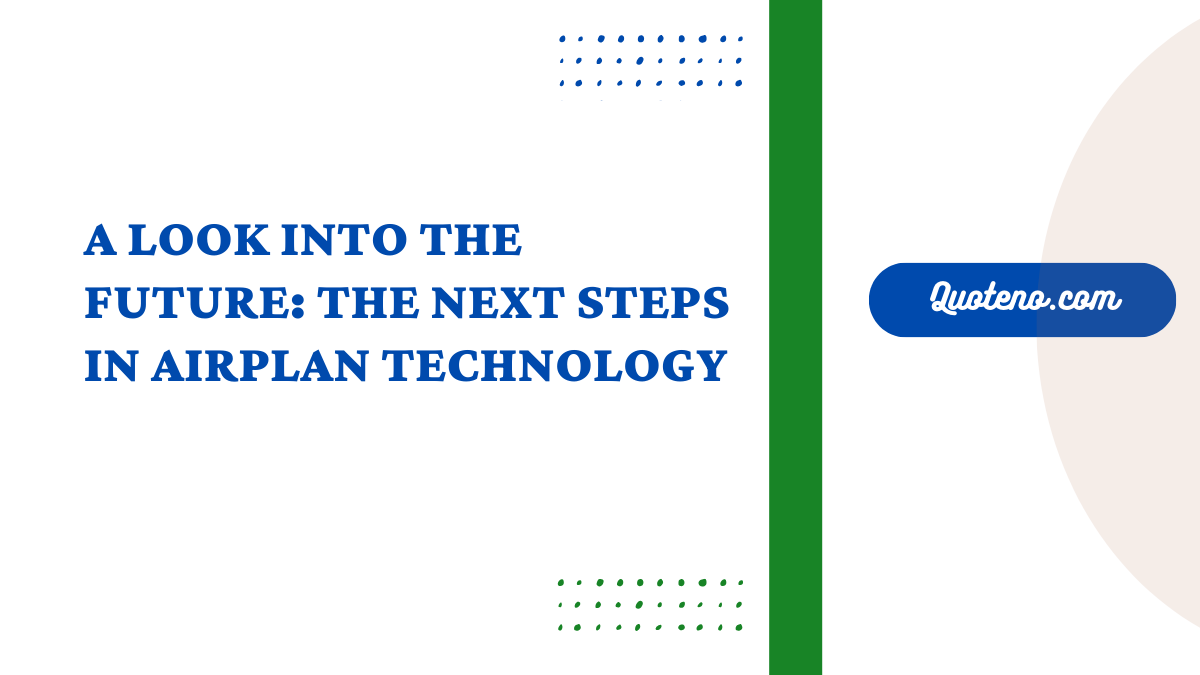The world of aviation is on the cusp of a technological revolution that promises to redefine how you travel through the skies. The relentless pursuit of innovation and efficiency has been a hallmark of the aviation industry since its inception. As you look into the future, the next steps in airplane technology promise to be nothing short of awe-inspiring. There are a number of promising technologies that will influence how you fly, including the evolution of aircraft tires, new materials, and sustainable aviation fuels.
Table of Contents
Sustainable Aviation Fuels (SAFs)
One of the aviation industry’s most pressing challenges is its environmental footprint. To address this, sustainable aviation fuels (SAFs) are emerging as a game-changer. Unlike conventional jet fuels, SAFs are derived from renewable sources such as algae, cooking oil, and municipal waste. These fuels promise to significantly reduce the carbon emissions associated with air travel.
The development and widespread adoption of SAFs are critical for the aviation industry to meet its sustainability goals. Airlines and manufacturers invest heavily in research and development to make SAFs more cost-effective and readily available. The use of SAFs reduces carbon emissions and enhances the overall efficiency of aircraft engines.
Advanced Composite Materials
The materials used in aircraft construction are undergoing a revolution of their own. Advanced composite materials, such as carbon fiber-reinforced polymers, are increasingly replacing traditional aluminum. These materials are not only lighter but also stronger, resulting in aircraft that are more fuel-efficient and environmentally friendly.
Advanced composites allow for greater design flexibility, leading to aircraft with improved aerodynamics and reduced drag. This, in turn, contributes to reduced fuel consumption and emissions. Moreover, these materials are more corrosion-resistant, prolonging the aircraft’s lifespan and reducing maintenance costs.
Electric and Hybrid Propulsion
The dream of electric or hybrid-electric aircraft is inching closer to reality. These revolutionary propulsion systems have the potential to transform the aviation industry by offering quieter, more efficient, and eco-friendly flight. Electric propulsion systems, in particular, promise zero-emission flights, which is a significant step towards greener aviation.
Electric and hybrid-electric aircraft are currently in the experimental stage, with several prototypes in development. These aircraft rely on batteries and electric motors to drive their propulsion systems, reducing the reliance on traditional jet engines. While there are still technical challenges to overcome, such as battery weight and energy density, the progress in this field is undeniable.
Advanced Aerodynamics and Wing Design
The future of airplane technology also lies in advanced aerodynamics and wing design. Engineers are continuously exploring innovative wing shapes and configurations to optimize aircraft performance. These advancements aim to enhance fuel efficiency, reduce drag, and improve flight stability.
One notable development is the adoption of blended wing body (BWB) designs. These aircraft have a flattened, seamless transition between the fuselage and wings, which reduces drag and increases lift. This design improves fuel efficiency and allows for larger passenger capacities, potentially revolutionizing long-haul travel.
Autonomous Flight
The concept of autonomous flight is no longer confined to science fiction. In the near future, you can expect to see more autonomous features integrated into aircraft systems. These features range from autopilots and automated navigation to full-fledged autonomous flights.
Autonomous flight has the potential to enhance safety and efficiency in air travel. Advanced sensors, artificial intelligence, and machine learning algorithms enable aircraft to make real-time decisions, optimize routes, and respond to changing weather conditions. While pilots will always play a critical role in aviation, autonomous systems can serve as valuable co-pilots, reducing the risk of human error.
A Key Component
Tires are a critical but often overlooked component of an aircraft’s technology stack. Michelin aircraft tires are an example of the forefront of tire technology. These specialized tires are designed to withstand the unique demands of aviation and play a crucial role in ensuring safe take-offs and landings.
Aircraft Tires are engineered to handle the immense weight and stresses placed upon them during the landing and take-off phases. They are designed for maximum durability and traction, even in adverse weather conditions. These tires are a testament to the tireless pursuit of excellence in aviation technology.
Sustainable Cabin Design
The future of airplane technology isn’t limited to what happens outside the aircraft; it extends to the passenger experience within the cabin. Sustainable cabin designs are gaining traction, focusing on reducing waste and energy consumption.
Airlines are exploring innovations such as recyclable materials for seats, LED lighting to conserve energy, and more efficient air conditioning systems. Additionally, cabin layouts are optimized to increase passenger comfort and better use available space.
Conclusion
As you gaze into the future of airplane technology, it’s evident that innovation is the driving force behind the industry’s evolution. Sustainable aviation fuels, advanced materials, electric propulsion, autonomous flight, advanced aerodynamics, and specialized components contribute to a greener, more efficient, and safer aviation landscape.
The challenges ahead are significant, but the aviation industry has a proven track record of overcoming obstacles through ingenuity and collaboration. The next steps in airplane technology promise to revolutionize how you travel and contribute to a more sustainable and interconnected world.
- 5 Must-Visit Travel Destinations to Enrich Your Knowledge of History and Culture - May 17, 2024
- 5 Services Your Small Business Needs ASAP - May 13, 2024
- Maintaining Home Integrity: The Unseen Value of Gutters - May 13, 2024

